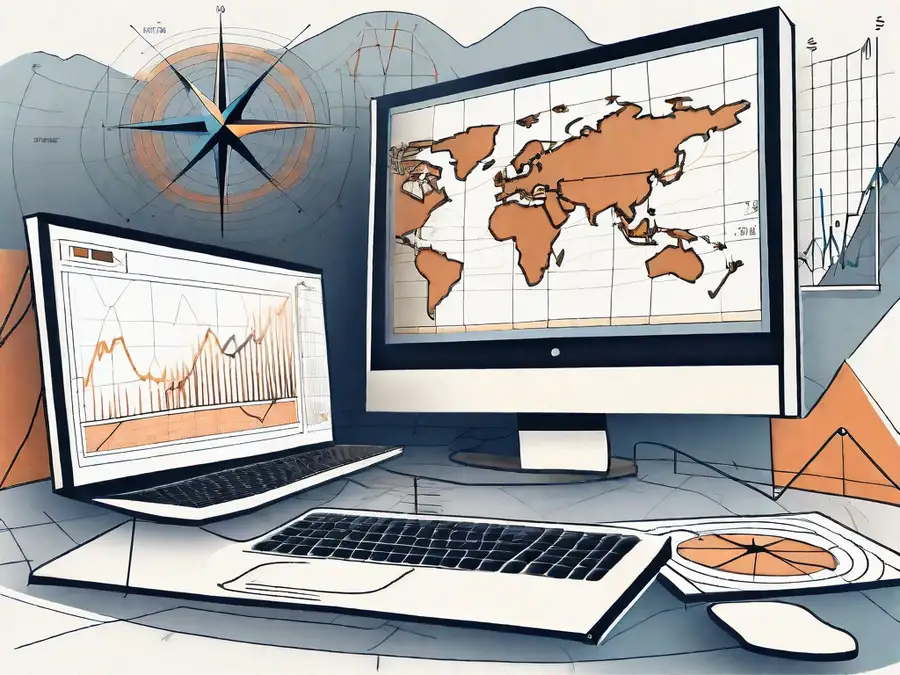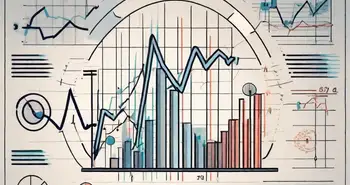The Ultimate Guide to Trading Accounts

Trading accounts are an essential tool for individuals looking to participate in the financial markets. In this comprehensive guide, I will walk you through everything you need to know about trading accounts, from understanding their purpose to managing and enhancing your trading skills. So, whether you are a beginner or an experienced trader, this guide will provide you with valuable information to navigate the world of trading accounts.
Understanding Trading Accounts
Before diving into the specifics of trading accounts, let's first establish a clear definition and purpose. A trading account is a financial account that allows you to buy and sell various financial instruments, such as stocks, commodities, currencies, and more. It serves as a gateway to the financial markets, giving you the ability to participate in trading activities.
Trading accounts play a crucial role in the world of finance, enabling individuals to engage in buying and selling activities that can potentially generate profits. These accounts provide traders with a platform to execute their trading strategies and capitalize on market opportunities. By opening a trading account, you gain access to a wide range of financial instruments and markets, empowering you to make informed investment decisions.
There are different types of trading accounts available, each catering to specific trading styles and strategies. Let's explore some of the most common types:
Definition and Purpose of Trading Accounts
A trading account is a necessary tool for individuals looking to actively participate in the financial markets. It allows you to place trades, monitor your positions, and manage your portfolio all in one place. Whether you are an individual investor or a professional trader, a trading account provides you with the necessary access and tools to execute your trading strategies.
When you open a trading account, you typically gain access to a trading platform provided by your chosen brokerage firm. This platform serves as your window into the financial markets, offering real-time market data, advanced charting tools, and order execution capabilities. With a trading account, you can take advantage of market fluctuations, implement trading strategies, and potentially generate profits.
Different Types of Trading Accounts
When it comes to trading accounts, one size does not fit all. There are several types of trading accounts to choose from, depending on your trading style and preferences.
- Standard Accounts: These accounts are suitable for beginners and individuals looking for an all-in-one solution. They offer a range of trading instruments and often come with additional educational resources. With a standard account, you can start trading with a relatively small initial investment and gradually build your trading skills and knowledge.
- Margin Accounts: Margin accounts allow traders to borrow funds from their brokerage to increase their purchasing power. This type of account is commonly used by more experienced traders and requires a deep understanding of risk management. With a margin account, you can potentially amplify your profits, but it also exposes you to higher risks.
- Options Trading Accounts: If you are interested in trading options, you may opt for an options trading account. These accounts provide you with the necessary tools and resources to execute various options trading strategies. Options trading involves buying and selling options contracts, which give you the right, but not the obligation, to buy or sell an underlying asset at a predetermined price within a specific time frame.
Choosing the right type of trading account is crucial for your trading success. It is important to consider your trading goals, risk tolerance, and level of experience when selecting an account type. Additionally, it is advisable to research different brokerage firms and compare their offerings before opening a trading account. By doing so, you can ensure that the account you choose aligns with your trading needs and provides you with the necessary tools and support to achieve your financial goals.
Setting Up Your Trading Account
Once you have a clear understanding of the different types of trading accounts, it's time to set up your own trading account. Here are some important steps to consider:
Choosing the Right Brokerage
Choosing the right brokerage is crucial to ensure a smooth and efficient trading experience. Look for a brokerage that offers competitive commission rates, user-friendly trading platforms, access to a wide range of financial instruments, and reliable customer support. Conduct thorough research and read reviews to find the best fit for your needs.
When selecting a brokerage, it's important to consider the level of experience you have in trading. If you're a beginner, you may want to choose a brokerage that offers educational resources and tools to help you learn the basics of trading. On the other hand, if you're an experienced trader, you may prioritize advanced trading features and analysis tools.
Another factor to consider when choosing a brokerage is the type of financial instruments you're interested in trading. Some brokerages specialize in specific markets, such as stocks, options, or forex, while others offer a wide range of instruments. Make sure the brokerage you choose provides access to the markets you want to trade in.
Understanding the Account Opening Process
Opening a trading account involves a series of steps, including providing personal information, verifying your identity, and funding your account. Each brokerage may have slight variations in their account opening process, so carefully follow their instructions and provide accurate information.
When opening a trading account, you will typically need to provide personal information such as your name, address, date of birth, and contact details. This information is necessary for the brokerage to comply with regulatory requirements and ensure the security of your account.
In addition to personal information, you may also need to provide proof of identity and address. This can be done by submitting scanned copies of your passport or driver's license, as well as utility bills or bank statements that show your current address. The brokerage will use this information to verify your identity and prevent fraudulent activity.
Once your personal information and identity have been verified, you will need to fund your trading account. Most brokerages offer various funding options, such as bank transfers, credit or debit card payments, or electronic payment systems. Choose the method that is most convenient for you and ensure that you understand any fees or processing times associated with the chosen method.
After funding your account, you will be ready to start trading. However, it's important to note that trading involves risks, and it's recommended to familiarize yourself with the trading platform and practice with a demo account before risking real money.
Navigating Your Trading Account
Once you have successfully set up your trading account, it's time to familiarize yourself with the various features and tools available to you:
Familiarizing with Trading Platforms
Trading platforms serve as the interface between you and the financial markets. Take the time to understand the features and functionalities of your chosen trading platform. This includes placing trades, monitoring your positions, accessing charts and technical analysis tools, and receiving real-time market data.
Understanding Trading Tools and Indicators
To make informed trading decisions, it's important to understand the various tools and indicators available to you. These tools can help you analyze market trends, identify potential entry and exit points, and manage your risk effectively. Take advantage of the educational resources offered by your brokerage to learn how to effectively use these tools.
Managing Your Trading Account
Effective portfolio management is crucial to long-term success in trading. Here are some key aspects to consider:
Balancing Your Portfolio
Diversification is a core principle in managing your trading account. By spreading your investments across different asset classes and industries, you can reduce the impact of market volatility and potentially increase your overall returns. Regularly review and adjust your portfolio to ensure it aligns with your risk tolerance and investment goals.
Risk Management Strategies
Trading involves inherent risks, and it's essential to have a proper risk management strategy in place. This includes setting stop-loss orders to limit potential losses, using position sizing techniques to manage risk exposure, and having a disciplined approach to risk-reward ratios. Remember, successful traders aim to preserve capital as much as they aim to generate profits.
Enhancing Your Trading Skills
To truly excel in trading, continuous learning and skill development are necessary. Here are some areas to focus on:
Learning Technical Analysis
Technical analysis involves the study of price patterns, historical data, and market trends to predict future price movements. By learning technical analysis techniques, you can identify potential trading opportunities and make more informed decisions. Explore various technical indicators, chart patterns, and trend analysis methodologies to build your expertise in this area.
Mastering Fundamental Analysis
Fundamental analysis involves analyzing macroeconomic factors, company financials, and industry trends to assess the intrinsic value of an asset. By understanding fundamental analysis, you can uncover undervalued or overvalued assets and make informed investment decisions. Stay updated with relevant news, economic data, and company reports to enhance your fundamental analysis skills.
FAQs
What is a trading account?
A trading account is a financial account that allows individuals to buy and sell various financial instruments, such as stocks, commodities, currencies, and more. It serves as a gateway to the financial markets, giving you the ability to participate in trading activities.
What are the different types of trading accounts?
There are several types of trading accounts to choose from, including standard accounts, margin accounts, and options trading accounts. Each caters to specific trading styles and preferences.
How do I set up a trading account?
To set up a trading account, start by choosing the right brokerage that suits your needs. Then, follow their account opening process, which typically involves providing personal information, verifying your identity, and funding your account.
How do I manage my trading account?
To effectively manage your trading account, focus on balancing your portfolio through diversification and implementing risk management strategies. Regularly review and adjust your portfolio based on your risk tolerance and investment goals.
How can I enhance my trading skills?
Continuous learning and skill development are key to enhancing your trading skills. Focus on learning technical analysis techniques to identify trading opportunities and master fundamental analysis to assess the intrinsic value of assets.
With this ultimate guide to trading accounts, you are equipped with the knowledge and tools needed to navigate the financial markets with confidence. Remember to always stay informed, practice risk management, and continuously strive to enhance your trading skills. Happy trading!
Ready to harness the power of trading? Look no further than Morpher, the revolutionary trading platform that's changing the game with zero fees, infinite liquidity, and a non-custodial wallet for your security. Whether you're interested in stocks, cryptocurrencies, forex, or even niche markets like NFTs, Morpher's unique trading experience on the Ethereum Blockchain is designed to maximize your investment opportunities. Take advantage of fractional investing, short selling without interest fees, and up to 10x leverage to amplify your trades. Sign Up and Get Your Free Sign Up Bonus today to start trading with Morpher and explore the full potential of DeFi's real yield.

Disclaimer: All investments involve risk, and the past performance of a security, industry, sector, market, financial product, trading strategy, or individual’s trading does not guarantee future results or returns. Investors are fully responsible for any investment decisions they make. Such decisions should be based solely on an evaluation of their financial circumstances, investment objectives, risk tolerance, and liquidity needs. This post does not constitute investment advice.

Painless trading for everyone
Hundreds of markets all in one place - Apple, Bitcoin, Gold, Watches, NFTs, Sneakers and so much more.

Painless trading for everyone
Hundreds of markets all in one place - Apple, Bitcoin, Gold, Watches, NFTs, Sneakers and so much more.









